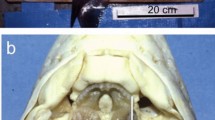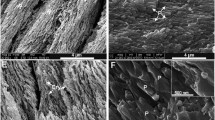Abstract.
The purpose of this study was to elucidate the mineralization process of mantle dentine by ultrastructural and element-analytical investigation of matrix vesicles and successive stages. Upper second molars of albino rats were cryofixed and embedded in resin after freeze drying. Semithin dry sections were prepared for analyzing the calcium and phosphorus concentrations in the mineralized matrix vesicles or noduli, larger mineralized islands, and the mantle dentine. For ultrastructural studies, it was necessary to reduce section contact with hydrous fluids to a minimum in order to avoid preparation artifacts. The first mineral deposits were recognized as dot-like formations both in the interior of matrix vesicles and in association with the inner vesicle membrane. This indicated the existence of mineral nucleating sites located both at the inner membrane and at calcium-phosphate-binding macromolecules in the interior of the matrix vesicles. A significantly higher mineral content was found in mineralized matrix vesicles than in the mineralized extravesicular regions of the mineralized islands, suggesting the existence of a rapidly and densely mineralizing matrix in the matrix vesicles. A significant increase in mineral content per volume proceeding from the mineralized islands to mantle dentine suggested a further increase in the density of mineral.
Similar content being viewed by others
Author information
Authors and Affiliations
Additional information
Received: 18 August 1995 / Accepted: 29 November 1995
Rights and permissions
About this article
Cite this article
Stratmann, U., Schaarschmidt, K., Wiesmann, H. et al. Mineralization during matrix-vesicle-mediated mantle dentine formation in molars of albino rats: a microanalytical and ultrastructural study. Cell Tissue Res 284, 223–230 (1996). https://doi.org/10.1007/s004410050582
Issue Date:
DOI: https://doi.org/10.1007/s004410050582




